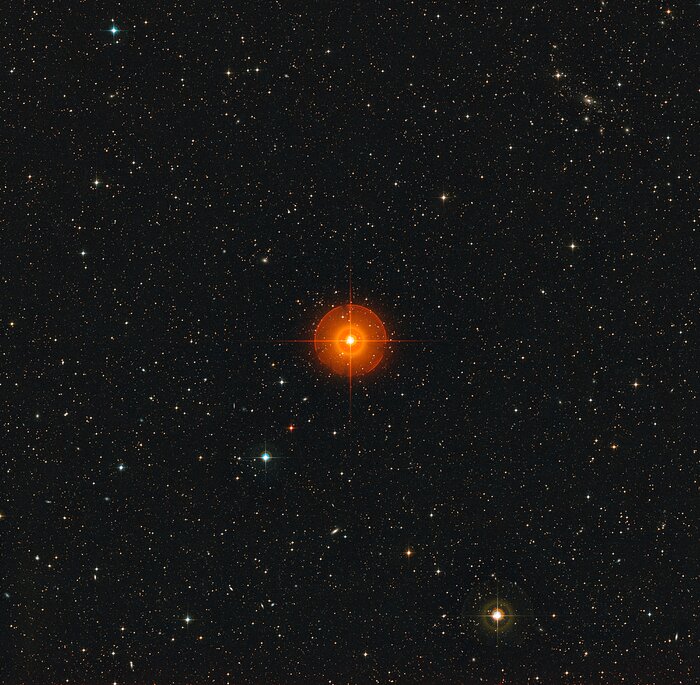Although the stars are very large, they are very distant, and appear as point sources in telescopes. Normally, you won’t see more than one pixel. Now astronomers have used the Atacama Large Millimeter/submillimeter Array (ALMA) to resolve details on the surface of the star R Doradus and track its activity over 30 days. The images revealed giant, hot bubbles of gas 75 times larger than the entire Sun. R Doradus is 350 times more massive than our Sun, but only 180 light-years away.
“This is the first time that the collapsing surface of a real star can be visualized in such a way,” said Wouter Vlemmings, a professor at Chalmers University of Technology in Sweden, and lead author of the study, in a press release from the European Southern Observatory (ESO). “We did not expect that the data would be of such high quality that we would see so much detail of the convection on the stellar surface.”
In the study, published in Nature, the astronomers detailed how they observed R Doradus, a massive red supergiant star, for four weeks between July 2 and August 2, 2023. The observations were made using the longest available ALMA baseline. The images revealed a stellar disk with prominent small features that give structure and convection motions to the stellar surface.
Convection is the mixing of gas inside a star, where heated gas from the star’s interior created by nuclear fusion in the core rises to the surface and cooler, denser gas in the star’s photosphere sinks. . This continuous motion also distributes heavy elements formed in the core, such as carbon and nitrogen, throughout the star, and convection is also thought to be responsible for the stellar winds that transport these elements. out into the cosmos to form new stars and planets.
“Convection creates the fine grain structure visible on the surface of our Sun, but difficult to see in other stars,” said Theo Khouri, a researcher at Chalmers who is a co-author of the study. “With ALMA, we’re not only directly seeing convective granules — which measure 75 times the size of our Sun! — but also measure how quickly they act the first time.”
While convection bubbles have previously been observed in detail on the surface of other stars, including another observation of a red giant star using the PIONIER instrument on ESO’s Very Large Telescope Interferometer, ALMA’s higher resolution allowing astronomers to track the motion of the bubbles in a way not possible with other telescopes.
The researchers found that the grains of R Doradus appear to move on a monthly cycle, which is faster than scientists expected based on how convection works on the Sun.
“We still don’t know what causes the difference. Convection seems to change as a star ages in ways we don’t yet understand,” said Vlemmings. In their paper, the team wrote, “This indicates a possible difference between the convection properties of low-mass and high-mass evolved stars.”

Red giant stars are what main-sequence stars like our Sun will become when they run out of their hydrogen fuel, and they expand to hundreds of times their normal diameter. Since R Doradus has a mass similar to that of our Sun, this red giant star is likely a good example of what our Sun will look like in about five billion years.
“It’s amazing that we can now directly image details on the surfaces of stars so far away, and observe physics that until now has only been seen mostly in our Sun,” said Behzad Bojnodi Arbab, a PhD student at Chalmers was also involved. in learning.
#High #Resolution #Images #Show #Bubbling #Gas #Surface #Star